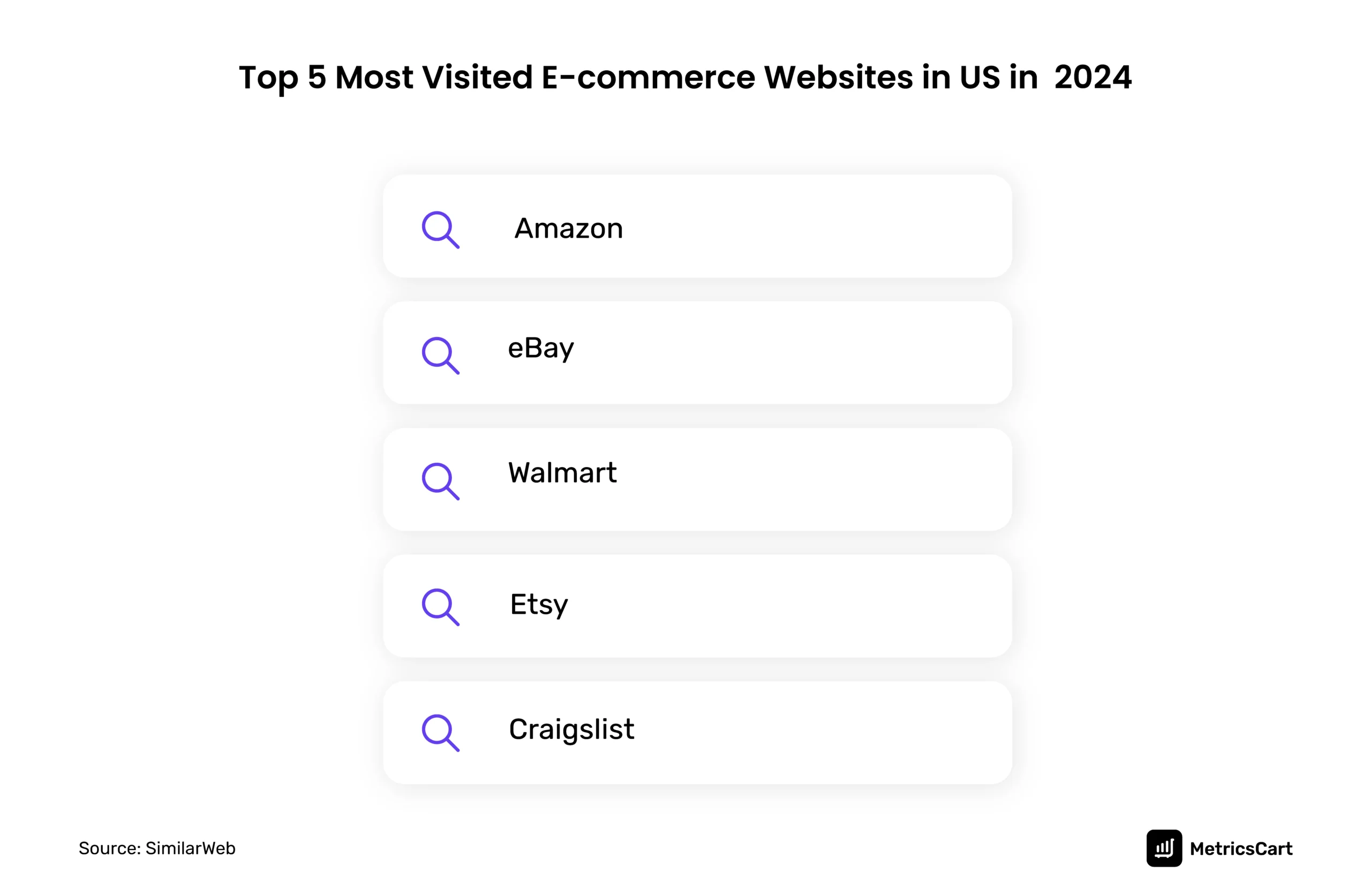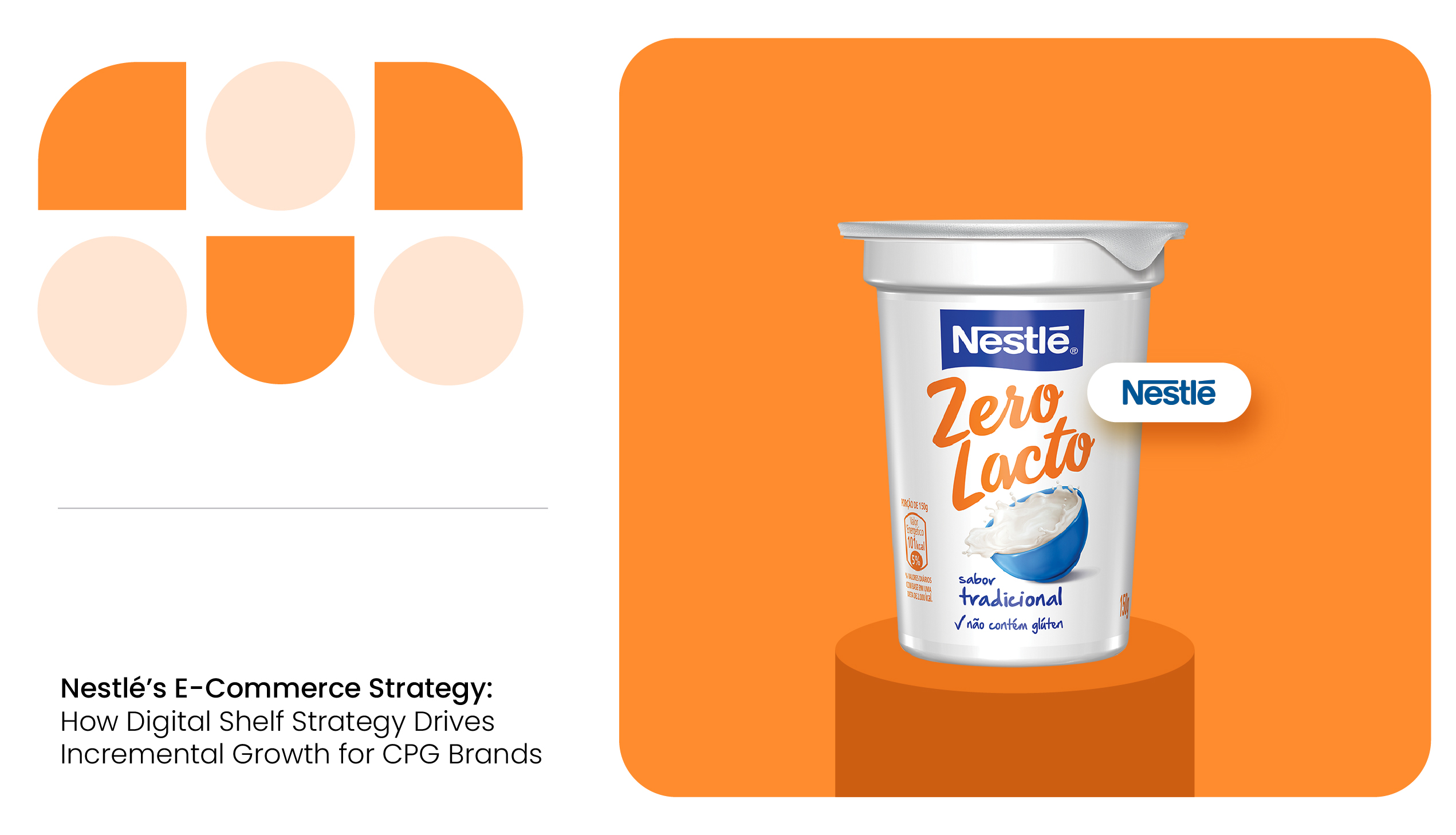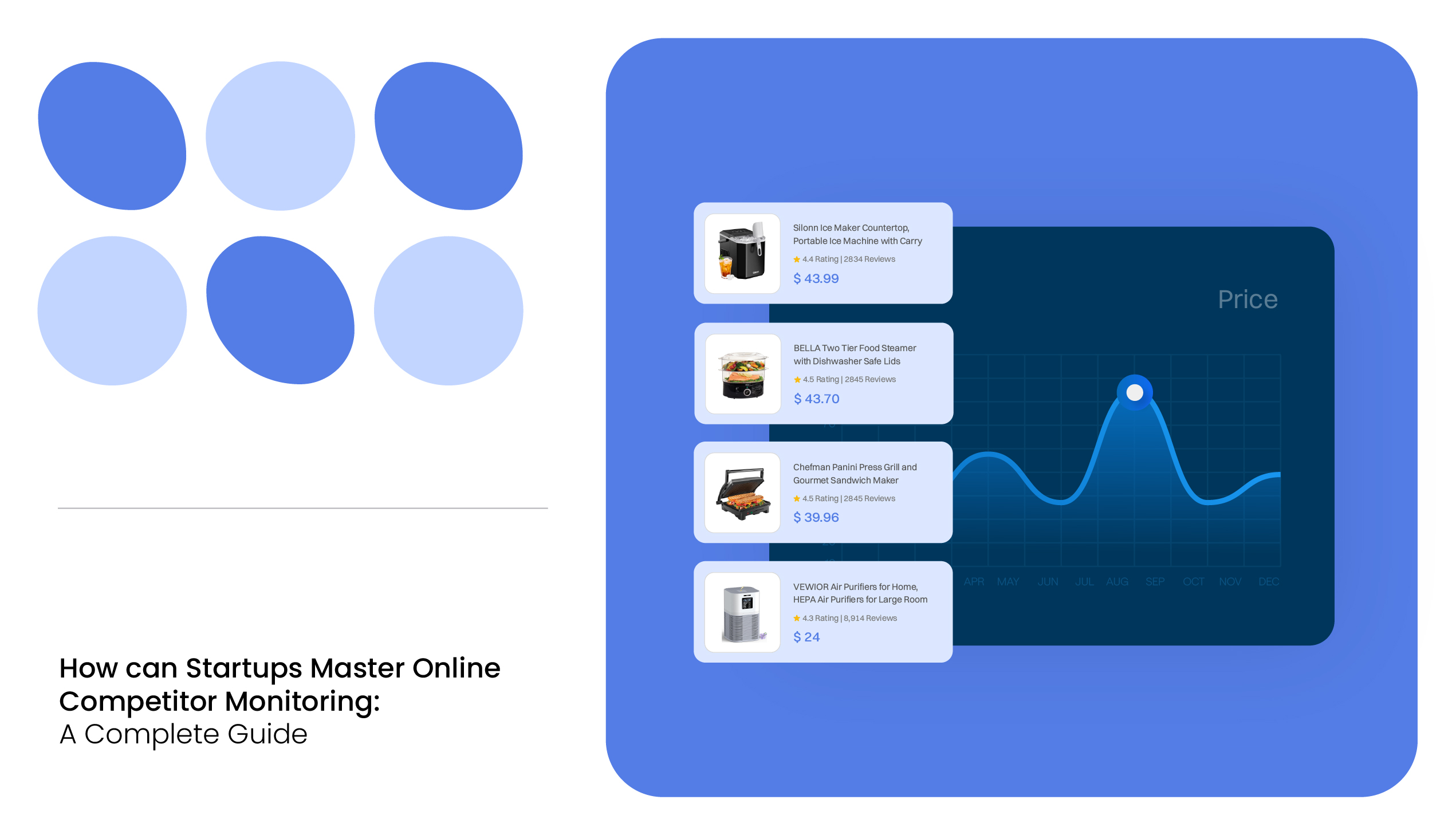Amazon’s 2024 first-quarter report declares every minute, 7800 products are bought from the US sellers registered with them. The number sounds encouraging! Yet, if you are a brand’s third-party seller selling online and experiencing high cart abandonment rates and low conversions, here is a checklist to see if you are making any of these e-commerce mistakes in business.
As a bonus, we have stated some of the key factors for the growth of e-commerce in this read.
Make your Products more Discoverable on E-Commerce Sites
As customers rarely take a straightforward path while shopping, the more places a brand is visible to shoppers, the greater the possibility of sales. However, sellers must customize their catalog according to each site’s specifications.
There are two key ways to increase product visibility:
- Optimize the product detail page to improve the SEO of the listing
- Besides physical stores and the brand’s own website shop, list the products across multiple online marketplaces
According to online research by Similarweb, based on traffic analysis, Amazon is the most visited e-commerce website in the US in 2024. In the second position is eBay, followed by Walmart, Etsy, and Craiglist, and in the third, fourth, and fifth positions, respectively.

Though similar, not all online marketplaces are the same. Among these, eBay, Etsy, and Craigslist are consumer-to-consumer (C2C) marketplaces. Whereas, Amazon and Walmart serve as a marketplace for B2C and B2B sellers.
READ MORE | Worried about how to boost your e-commerce sales? Explore our article on How to Increase E-Commerce Sales?
What are the 10 Common E-Commerce Mistakes?
60% of Amazon’s sales are contributed by 3P sellers. So, the market is conducive, provided the product reaches the right audience and finds a place in the minds of consumers.
E-commerce marketing lays the foundation for a great customer experience and long-term relationships. To attract traffic, brands should primarily:
- Make the products available across multiple touchpoints to purchase
- Engage customers through social media and e-mail marketing
- Ensure the product listings on the marketplaces are optimized for SEO with descriptive content, images, competitive pricing, and positive ratings & reviews.
Listed here are the e-commerce problems and solutions. Correcting these e-commerce mistakes can help brands and sellers gain a competitive advantage.
#1 Entering the E-Commerce Industry Without Product Research
#2 Not Providing a Convenient Buying Option
#4 Not Using Competitive Intelligence
#5 Not Leveraging Enhanced Content Features
#6 Not Tracking Competitor Pricing
#7 Not Having a Compelling Product Description Page
#9 Not Monitoring the Inventory
#10 Unresponsive Customer Support
#1 Entering the E-Commerce Industry Without Product Research
Sellers exploring e-commerce opportunities must identify a winning niche product to meet changing customer demand. A product that solves customer pain points is better than adding a product in an already saturated category.
In the long run, data-based decisions tend to find better results. One such method is tracking best seller rank to identify high-demand and low-competition products.
MetricsCart tracks category bestsellers of e-commerce sites such as Amazon.
#2 Not Providing a Convenient Buying Option
Direct-to-consumer sales ensure better margins for brands. Yet, most consumers prefer to shop from marketplaces where they already have accounts. They may be comfortable with a navigation pattern, checkout process, and payment options.
For customers’ convenience, giving direct links to all the product pages where they have a presence on the brand’s website allows shoppers to complete the sale with a click on their favorite marketplace.
Linking directly to the relevant product page on the marketplace is suggested to avoid customers encountering any competitors on the path to purchase.
#3 Lack of Social Proof
Good reviews give customers the confidence to buy a product. At the same time, addressing customer complaints at the earliest encourages shoppers to spread the good word to others.
Tracking reviews gives an idea of the demand and effectiveness of a product not just to potential customers but potential sellers looking for business opportunities.
Adding screenshots or links of user-generated content from third-party sites on the brand’s site gives consumers a reason to trust the brand and thereby maximize conversions.
MetricsCart does advanced sentiment analysis of ratings and reviews for brands to improve their products or services.
#4 Not Using Competitive Intelligence
The most common e-commerce mistake that causes brands to lose sales is not following competitors. Using competitive intelligence can help sellers and brands in more than one way:
Customers considering price a deciding factor might buy from a competitor selling a similar product at a lower price point. Hence, comparing the prices of similar items in a category is done to
- Spot gaps in competitor products to identify niche product categories
- Adding similar products to the same category as competitors for customers to spot easily
- Decide on the time to have promotions
- Helps to gauge the level of competition and the demand for that product
- Track the trending products in other marketplaces to identify the demand for products
MetricsCart helps in effective competitor monitoring. This includes competitors’ products, category pricing, ratings, ranking, and more.
#5 Not Leveraging Enhanced Content Features
Consumers may feel more confident about buying when they get a complete product perspective. Eye-catching video demonstrations and high-quality photos with visibility from all angles make it easy for customers to make their purchase decisions.
C2C sites such as eBay and Craiglist allow sellers to post 12 images for free. Sellers must make the most of this marketing opportunity as images are as good as 1000 words.
#6 Not Tracking Competitor Pricing
Price wars in e-commerce are common, and adjusting prices to stay ahead of the competition is inevitable. Not monitoring competitors’ pricing will prevent it from scaling business unless a seller sells a product in a niche category.
MetricsCart’s advanced e-commerce pricing intelligence monitoring offers:
- Features to set prices based on competitors’ prices, inventory levels, and sales velocity
- Analyses list prices of competitors to track trends and make dynamic pricing decisions
- Historical view of price across multiple dimensions to make long-term strategic decisions
- Track seasonal price changes and identify the most opportune time to launch promotions
- Evaluate competitiveness post-promotions to selling prices
#7 Not Having a Compelling Product Description Page
In crowded product categories, it can be hard to stand out. To generate traffic, establish a strong online presence, and consistent branding across channels, there is a need to highlight the product benefits by doing keyword optimization to reinforce the brand name and description from the competition.
MetricsCart’s content compliance service makes the listings e-commerce-ready.
#8 Ignoring Abandoned Carts
According to Moosend, an e-mail marketing company, approximately 69% of online carts are abandoned by users. However, 26% of these shoppers can return to the product page to complete sales through re-targeting ads.
#9 Not Monitoring the Inventory
The non-availability of products may lead to a dip in ranking. To optimize strategies, sellers have to monitor inventory performance, take the count of excess inventory, and availability at the SKU level.
MetricsCart helps clients to maintain online inventory health and drive sales.
#10 Unresponsive Customer Support
Buyers may lose interest if the sellers don’t respond promptly to their inquiries. Slow customer response time and not offering a solution in case of a complaint leads to dissatisfaction among shoppers.
Using a dedicated customer service team or chatbot is a good option for fast and effective responses on the brand’s e-commerce site. Similarly, replying to reviews is a good practice to follow.
READ MORE | Want to know what’s trending this year in e-commerce space? Dive deep into our detailed read on e-commerce trends.
Grow E-Commerce Business with Digital Shelf Analytic Solutions
A lot happens on the customer journey, from product awareness to purchase. An e-commerce site or a seller who can create an experience that resonates with the buyers wins.
As a digital shelf analytics service provider, MetricsCart assists 3P sellers and brands to streamline e-commerce listings, optimize purchase paths, and attract customers’ attention.
Our data team extracts e-commerce data, visualizes and creates insightful reports, and presents them on an easy-to-access dashboard. Additionally, we help clients customize and integrate other data feeds like FTP and Amazon S3 to their existing internal pricing platforms.
Touch base with us to create a successful e-commerce success story.






